- Home
- Peter Ackroyd
Charlie Chaplin Page 11
Charlie Chaplin Read online
Page 11
So for his next film he returned to more familiar territory. In The Count Chaplin impersonates an important dignitary, a masquerade he has already used in films such as A Jitney Elopement. It gives him scope to mimic fake dignity and spurious refinement. He loved in any case to play an impostor. The role of game and fraud appealed to him.
Charlie is a tailor’s assistant, before he takes on the role of Count Broko, but he is comically unsuited for any kind of work. He does not understand this. His reaction is to laugh at his own incompetence. When he is fired, he always asks for his back wages. He cannot cope with the social rituals of the world. It may be worth reporting that he spent three weeks on filming one scene alone, in which he kicks his rival while whirling around with a partner on the dance floor. For those weeks a light orchestra was hired to play “They Call it Dixieland” over and over again.
He was beginning to take increasingly long periods to complete each film. Each scene might now be rehearsed fifty times, and then filmed for a further twenty times. The days of creative labour and the hours of rehearsal were compounded by the strain of acting and of direction behind the camera. Upon him alone rested the success of the entire expensive enterprise. This exhausting toil was followed by the endless work in the editing room where he would choose, perhaps, between frames thirty-seven and thirty-nine before splicing together another sequence. His impatience and frustration at delays, as well as his notoriously volatile temperament, also took their toll.
It was in this period that his relationship with Edna Purviance began to fail. He had been told that she was interested in another man, a leading actor at Paramount, and he had feigned indifference. They patched up matters after an impromptu dinner, but he was aware of his own failure. He had been concentrating all his attention on his work and not on her; he had expected faithfulness without in any sense earning it. When he stayed in New York, for example, he did not write to her. When he saw her and the actor from Paramount together once more, he sensed the truth of the matter. Even though their professional relationship continued, their more intimate attachment would soon come to an end.
An unwelcome intrusion into his private life was safely averted in the autumn of this year when he managed to prevent the publication of a volume entitled Charlie Chaplin’s Own Story. It was based upon a series of interviews he had given to a journalist from the San Francisco Bulletin, Rose Wilder Lane, in the previous year. Chaplin complained, through his attorney, that the book was an exercise in fabrication and fantasy. It is still an open question, however, who was responsible for the extravagant untruths. Rose Wilder Lane merely called herself a “faithful transcriber” and “editor,” and indeed Chaplin thanked her in a note on the verso of the title page for her “invaluable editorial assistance.”
It is in fact a work of romantic fantasy in which the narrator charts the adventures of his life in a manner not unsuited to Dickens, but there is so much local detail that it can only have come from the memory or imagination of Chaplin himself. He describes himself at one point as “a precocious, self-satisfied, egotistic boy, able to imagine unreal things and think them true.” The impression that the book gives is in any case of more importance than the facts of the matter. The narrator is self-assured and somewhat domineering with a great sense of his own importance; he is instinctively histrionic, a born actor who treats his contemporaries and his colleagues very much as his inferiors.
He began work on his next film for Mutual, The Pawnshop, in the early autumn of 1916. It is one of his most celebrated and successful works, largely because it is also the most inventive. The comic business piles scene upon scene, situation upon situation. A clock becomes a tin can, a doughnut becomes a dumb-bell, and the mouthpiece of a telephone becomes a magnifying glass; he teeters wildly upon a stepladder, and turns a tape upon the floor into a high wire. He seems to create the maximum effect with a minimum of effort. Great art may lie in the concealment of art.
The Pawnshop was followed by Behind the Screen, where Charlie is once more a put-upon employee risking all of the hazards and obtaining none of the rewards of hard labour. On this occasion he is a prop-man’s assistant in a film studio, which affords him the opportunity of satirising the clichés of the cinema; he is implicitly differentiating himself from the conventional sets and characters of his contemporaries. The film also contains the longest pie-throwing scene in the whole of Chaplin’s work; this itself is a joke against some of his fellow comics.
Just after he had concluded Behind the Screen something inexplicable seemed to happen. The Boston Society for Psychological Research was called in to examine “certain phenomena connected with the simultaneous paging of Mr. Charles Chaplin, motion picture comedian, in more than eight hundred large hotels of the United States” on 12 November. The society concluded that “we find beyond peradventure that … here existed for some inexplicable reason a Chaplin impulse, which extended throughout the length and breadth of the continent. In more than eight hundred of the principal hotels Mr. Chaplin was being paged at the same hour. In hundreds of smaller towns people were waiting at stations to see him disembark from trains upon which he was supposed to arrive.”
The truth of the matter is now irrecoverable, although it was suggested at the time that the image of Charlie had so entered the popular consciousness that he had become a national obsession. One newspaper in Memphis, in the following year, noted that American boys treated him as a companion; they talked to him on the screen, registering approval or disapproval of his actions. They also “bid him goodnight as though he was present in person. His astral body does the same work on the screen that his physical personality is expected to do.”
His next film, The Rink, offered a reprise of the act that he had performed for Fred Karno in Skating. He soon reacquired all of his skills, and his movements upon the ice are overwhelmingly graceful and melodic; he has once more triumphed over an unstable and unreliable environment. The same fluency was not enjoyed by some of the other actors. Eric Campbell, once more playing the villain in elaborate stage make-up, had to be pushed upon the rink where he remained practically immobile until he was kicked by Charlie in the abdomen. Charlie loved to laugh at the misfortunes of others. It is also significant that the other performers did not know what he was going to do next, and had instinctively to react. It is perhaps also worth noting that Charlie gains strength and resilience after he has been knocked down; this effect may derive from the early experiences of his life.
At the end of 1916 Chaplin was offered a large sum to appear in a musical comedy on the stage, but he refused. He had no ambition to return to the theatre and, in any event, he had more than enough money. In The Floorwalker, on discovering a bag full of notes, Charlie had called out “Spondulicks for ever!” That was essentially Chaplin’s situation. He was now making $10,000 a week, most of which he put aside. His assistant, Tom Harrington, paid almost daily visits to the Los Angeles Stock Exchange in order to handle his employer’s investments. Chaplin also relied upon the acumen of his brother who knew all about stocks and shares, bonds and units, and other such financial wizardries; Sydney had been working on his brother’s accounts for over a year.
He was at the same time trying to “improve” himself and there is some evidence to suggest that he informally employed Constance Collier to act as an elocutionist. She had been a famous actress in his youth, and now earned her living by training incipient Hollywood stars in performance and deportment.
The nature of his accent has always been unclear. It is more than likely that as a boy he had a strong cockney accent, although even in his first days in the theatre he may have attempted to acquire the tones of “stage English.” His mother may also have been instrumental in teaching her talented child how “to speak proper” in what would be considered a cultured voice. He was always a clever impersonator, and the effort would not have been prodigious. It is possible that he possessed a range of accents that he employed as the occasion demanded. In the 1920s he was described as ha
ving “a strong English accent … a musical, cultivated voice with an occasional indefinable whiff of cockney.” In later years he had a decidedly theatrical tone, pitched quite high, with slightly clipped diction and a distinct American twang. He pronounced the “a” of “dance” as in “bank.”
His four last pictures for Mutual, released in 1917, are some of his finest. They are the fruit of much indecision as well as contemplation, with the plot and direction of at least two of them being altogether changed in the process of filming itself. Easy Street is supposed to derive from East Street in Walworth, in which Chaplin believed himself to have been born. The sets for the film were otherwise designed to reproduce Kennington itself. It is reported that, in his excitement, he gave explicit instructions to his set designers to build a street and junction that were modelled on the neighbourhood of Methley Street, where he had lived with his mother beside a slaughterhouse and pickle factory. As always he wanted the work to be done immediately, and grew angry at any delay. In truth there is not much resemblance between Easy Street and Methley Street, except through the prism of an angry and overheated imagination. It seems to be just a generically rough urban street.
Charlie becomes a policeman in the film, while under the influence of a religious reformer played by Edna Purviance, and he is soon confronted by the bully of the street in the form of Eric Campbell. The usual rough and tumble ensues, but it is marked by inimitable pace and timing; the scenes of fight and chase, for example, are exquisitely choreographed so that everything seems to move as naturally as a bird in flight. Easy Street is also endlessly inventive. In one scene the little policeman subdues the gargantuan bully by the simple expedient of pulling a street lamp over his head and turning on the gas. Chaplin injured himself in one of the takes of this scene but, typically, he did not react or cry out until the filming was completed.
The role of policeman may not seem to suit the “little fellow” but, as Chaplin explained before the film’s release, “there is further contrast between my comedy walk and general funny business and the popular conception of dignity that is supposed to hedge a uniformed police officer.”
The Cure, Chaplin’s next film, did not appear until three months later, an unprecedented period of gestation. He plays a “funny drunk” who resists all the blandishments of temperance while on a visit to a health spa. Surviving out-takes reveal how scenes were dropped or rearranged, how old ideas emerged again at the last minute, and how much action depended upon chance and improvisation. It took him eighty-four takes, and a redesigned set, even to establish the opening of the film.
Chaplin hired in this period a publicist, Carlyle T. Robinson, who remained with him for the next fourteen years. When Robinson first arrived at the Lone Star Studios he quickly discovered that “Chaplin was a very difficult person to meet, even within his own studio. I learned also that it was absolutely forbidden for strangers to penetrate into the studio, that the star did not like journalists, and did not at all wish to be bothered by old friends, even those who had known Charlie Chaplin when he played in the English music halls.” This indifference to old friendship was characteristic of him.
Chaplin and Edna Purviance in a still from The Cure, 1917.
Courtesy of Time & Life Pictures
Robinson also discovered “that his hours were very irregular, and most of his demands impossible to satisfy, that he had very strong likings and even stronger hatreds.” Those whom he seemed to favour were disliked by the rest of the crew, but his prestige was such that he decided all relevant issues on and off the set. Rollie Totheroh recalled, too, that “he was the most lovable, likable person in the world when everything was going right. He could be like a Jekyll and Hyde. One day he’s a swell man and then he would be mean. All he had to do is give you a look; you could feel he hated your guts.”
Chaplin’s next film for Mutual, The Immigrant, is perhaps the most celebrated of this period. It began in the studio as a “serio-comedy” set among the habitués of Parisian nightlife; so the opening scene originally takes place in a cheap restaurant where Charlie and Edna are customers. It seemed too tame and Chaplin decided to cast Eric Campbell as the irascible head waiter, a change which considerably altered the pace and tone of the proceedings. Charlie cannot pay the bill and is only able to find the money after a series of ingenious and intricate pieces of comic business; the sequence is a miracle of small moves, each one of them filled with suspense and anticipation.
But then Chaplin began to ask himself the reason for Edna’s presence in the restaurant with Charlie. From this enquiry arose the idea of strangers in America. The Immigrant was therefore devised out of indirection and improvisation. In the out-takes of this film Chaplin sometimes steps out of character and shows flashes of irritation or even anger at the actors or extras. “Stop! Stop!” he calls out at one point, with a ferocious expression upon his face.
The first 384 takes were concerned with the restaurant, while the last 345 were scenes upon the boat carrying an assembly of immigrants to New York. Chaplin seemed to relish scenes upon boats and the possibilities of sea-sickness; it was a way of creating an unsettled or fluctuating world in which the “little fellow” must at all costs maintain his equilibrium. It was the bedrock of all his art. In the finished picture that which was filmed last, on board the boat, is shown first so that the story of The Immigrant flows more naturally. It becomes the narrative of strangers arriving in a strange land. Just as the Statue of Liberty comes into view, for example, the ship’s officers rope off the travellers in a spirit far from libertarian. It is one of Chaplin’s first statements of quasi-political satire, but it provoked no complaint. He was always in a sense an “outsider” in American society, with a very English appetite for anarchy that saved him from self-righteous moralism. He never really fitted in anywhere.
Chaplin wrote later that The Immigrant touched him more than any other film he had made. It is a story of survival against the odds in a desperate world; Charlie is both trickster and trusted companion. At the end he takes Edna Purviance to a registry office in pouring rain, which aptly suggests the poignancy and ambiguity of the situation. Can they find consolation together in an alien world?
Chaplin had shot more than 40,000 feet of film that now had to be reduced to 1,800 feet for the distributors. So for four days and four nights, without intermission, he retreated to his editing room; he might view the same scene forty or fifty times, removing an inch here and an inch there.
He was so exhausted that he went to San Francisco with Sydney for a week before going on to Sierra Madre where he was to shoot a few scenes for his last film with Mutual, The Adventurer. He then moved to Topanga Canyon which runs down to the beach at Malibu. This was the place where, in the course of filming, he observed a large rattlesnake coiled in the road; he was apparently so unnerved by the sight that he cancelled the shooting for the rest of the day. He was a child of the city, and never did like nature. He was frightened by large moths, for example, and by the crawling things of California.
In The Adventurer he has escaped from prison, perhaps a metaphor for the end of his contract, and becomes an honoured guest in the household of a wealthy mother and daughter whom he has rescued from drowning. Once more he is an impostor, relying upon his quick wits and lightning speed to escape the clutches of his pursuers; in a film that contains more slapstick elements than usual, Charlie relies upon cunning and ingenuity to find his way. In one sequence he poses as a lampstand to elude the police. He refills his glass by falling upon someone else’s. He stated in an article at the time that he relied upon two devices in this type of comedy. “One was the delight the average person takes in seeing wealth and luxury in trouble. The other was the tendency of the human being to experience within himself the emotions he sees on the stage or screen.”
After completing The Adventurer he travelled to Hawaii for five weeks with Edna Purviance; it was the last holiday they would enjoy together. It marked also a change in Chaplin’s life.
&n
bsp; 9
The Little Mouse
At the time The Immigrant reached the film-houses and nickelodeons, in the early summer of 1917, Chaplin signed a contract for $1 million. Mutual had already offered him $1 million for eight new films, so profitable had he proved, but now he was concerned with more than money. He wanted all the time in the world and the very best of working conditions. On his way to New York for further negotiations Sydney disclosed that the succeeding Chaplin films “will have a continuous story running through them” rather than a succession of humorous stunts or situations.
In fact Chaplin had already created “a continuous story” in films such as The Immigrant and Easy Street, but he wanted to go one step further in the direction of independence. He wanted, above all else, freedom from constraints. He managed this feat with First National Film Corporation who guaranteed him an advance of $125,000 on each film together with a direct split of the profits. Chaplin would be his own producer, and would have his own studio, without the interference of any executives more intent upon money than quality. He had become an independent film-maker at last, and was free now to experiment in ways unavailable to him before. It might also be said that, with his permanent cast of players, he had become an actor-manager in the Victorian theatrical tradition. The company required a steady staple of two-reel films to satisfy the demands of the distributors, but Chaplin’s ambitions were more profound. He was supposed to deliver eight films within eighteen months; as it turned out, he delivered nine over a period of five years.
His studio, the first ever created for an individual performer, was erected on the corner of Sunset Boulevard and La Brea Avenue. It was decided that, in the interests of maintaining good relations with the residents, the facade would be that of a row of “Tudor” cottages. Film studios were not necessarily welcome in respectable communities. When the building was about to be completed Chaplin put on Charlie’s famous big shoes, and marked his footprints in the wet cement; with his bamboo cane he then wrote his name and the date of 21 January 1918.

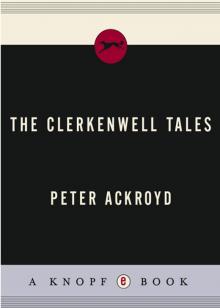 The Clerkenwell Tales
The Clerkenwell Tales The Canterbury Tales
The Canterbury Tales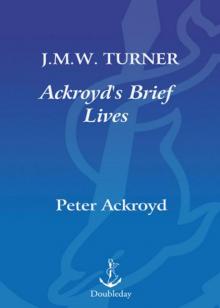 J. M. W. Turner
J. M. W. Turner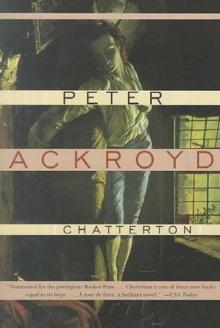 Chatterton
Chatterton The Canterbury Tales – A Retelling
The Canterbury Tales – A Retelling Alfred Hitchcock
Alfred Hitchcock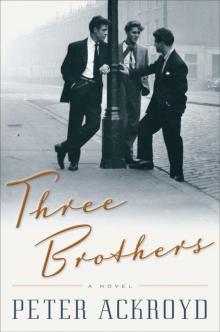 Three Brothers
Three Brothers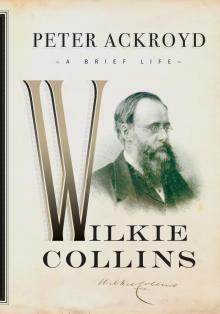 Wilkie Collins
Wilkie Collins Venice
Venice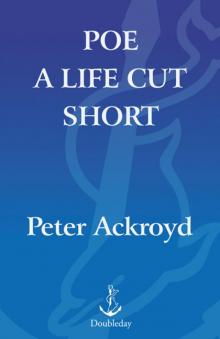 Poe
Poe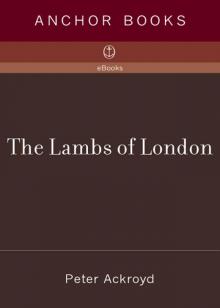 The Lambs of London
The Lambs of London London
London Queer City
Queer City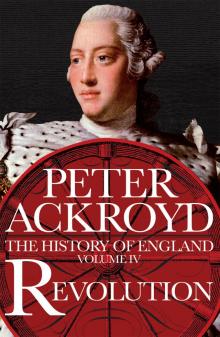 Revolution, a History of England, Volume 4
Revolution, a History of England, Volume 4 Venice: Pure City
Venice: Pure City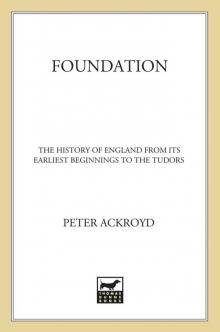 Foundation
Foundation Thames
Thames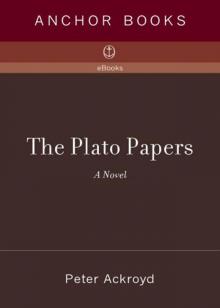 The Plato Papers
The Plato Papers The house of Doctor Dee
The house of Doctor Dee Rebellion: The History of England from James I to the Glorious Revolution
Rebellion: The History of England from James I to the Glorious Revolution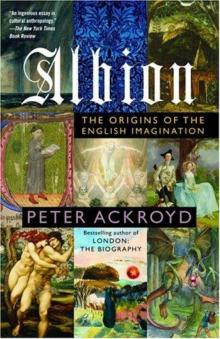 Albion: The Origins of the English Imagination
Albion: The Origins of the English Imagination The Fall of Troy
The Fall of Troy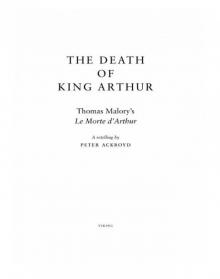 The Death of King Arthur
The Death of King Arthur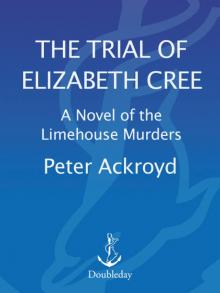 The Trial of Elizabeth Cree
The Trial of Elizabeth Cree London: The Biography
London: The Biography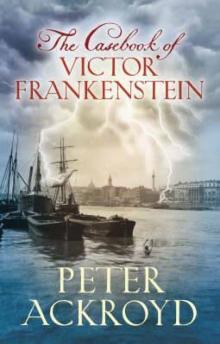 The Casebook of Victor Frankenstein
The Casebook of Victor Frankenstein Hawksmoor
Hawksmoor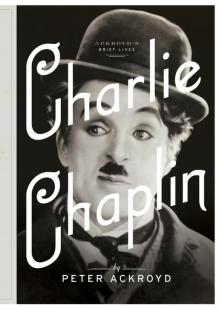 Charlie Chaplin
Charlie Chaplin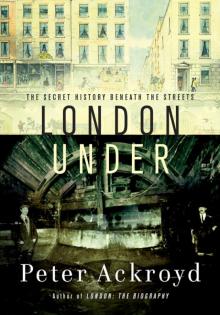 London Under
London Under